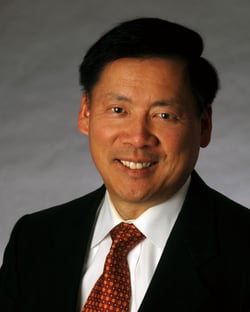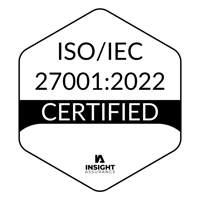Thought Leader Q&A: John Chiang, former CFO for Asian Health Services

 Today we welcome John Chiang, former CFO for Asian Health Services (AHS) in Oakland, California. AHS, founded in 1974, is a community health center that provides primary, dental and behavioral health services to more than 27,000 underserved patients. As a nationally recognized community health center model, AHS stands at the forefront of quality and innovation.
Today we welcome John Chiang, former CFO for Asian Health Services (AHS) in Oakland, California. AHS, founded in 1974, is a community health center that provides primary, dental and behavioral health services to more than 27,000 underserved patients. As a nationally recognized community health center model, AHS stands at the forefront of quality and innovation.
John was instrumental in moving AHS over to the Nonstop Wellness program in 2014, which has saved the organization hundreds of thousands of dollars in premium costs and out-of-pocket expenses.
Q: John, why do you think it’s critical for nonprofit leaders, including CFOs, to be involved in the employee healthcare purchasing process?
A: Nonprofits – including community health centers – are in uncertain waters these days, which can bring many challenges. How we navigate the difficult problems of funding, retaining key staff, and recruiting talented new employees reflects the type of leaders we are, or the type we want to be. Nonprofit leaders have a strong ethical responsibility to ensure the health and wellbeing of their employees so they can then turn around and care for our communities.
Q: What role do you think innovation plays in employee healthcare purchasing?
A: Nonprofits are often up against so many walls financially, that it can be hard to move away from a conservative approach – even if it’s not completely serving the organization anymore. But when the right approach is taken towards employee health benefits, the long-term benefits can be a huge game-changer for both the organization and employees. In the last few years, we have seen 10 California health centers move away from more traditional plans to embrace partial self-funding, saving their organizations millions of dollars in premium costs annually and eliminating employee out-of-pocket expenses. This shift in thinking – and the eventual shift in plan approach – came out of a commitment of time and resources towards exploring innovative alternatives to traditional models of healthcare.
Q: From a financial perspective, why did Asian Health Services decide to move to a partially self-funded model of employee healthcare?
A: Medical insurance is nearly 50 percent of the cost of employee benefits for AHS, and more than 50 percent if we add in other ancillary benefits such as dental and long-term disability. And for many years, Asian Health Services (AHS) was stuck in a cycle of 8-10 percent premium increases and diminishing benefits. Although we had a very proactive broker who made every attempt to help us lower costs, the spiral kept getting bigger and bigger until it was clear that staying with traditional care was an unsustainable choice. We made the commitment to explore partial self-funding as a more financially viable and employee-friendly alternative to traditional care. The end result has been a slowing of rate increases, year-over-year savings, a return of thousands of dollars in unspent reserve funds, and the complete elimination of all out-of-pocket expenses for AHS’s 350 employees and their families.
Q: What does this move away from traditional insurance models mean for employees?
A: From an employee standpoint, partial self-insurance provides a more lucrative compensation package at no extra cost (or less cost) to the organization, improving recruitment and retention efforts, decreasing turnover (and high turnover costs), and demonstrating a commitment towards employee health and wellbeing. But even more, reducing or completely eliminating employee cost-sharing and/or out-of-pocket expenses means that staff access healthcare earlier – reducing long-term spending on the part of the organization and increasing overall productivity.
Q: What recommendations do you have for other nonprofits that are looking for alternatives to traditional fully-funded insurance models?
A: Innovation in employee healthcare purchasing starts with exploration. To move forward in this new world of healthcare, nonprofits must take a hard look at their current employee healthcare offerings and decide if they are meeting the needs of staff in the same way that the organization meets the needs of its community. In the short-term this will take time, it will take resources, and it will take perseverance. But when done right, long-term your nonprofit will reap the benefits for years to come.
If you're ready to learn more about reducing your healthcare spending and employee out-of-pocket costs, get in touch to request a confidential savings analysis.
The information and materials herein are provided for general information purposes only and are not intended to constitute legal or other advice or opinions on any specific matters and are not intended to replace the advice of a qualified attorney, plan provider or other professional advisor. This information has been taken from sources believed to be reliable, but there is no guarantee as to its accuracy. This communication does not constitute a legal opinion and should not be relied upon for any purpose other than its intended educational purpose.
.png?width=1501&name=Nonstop_Logo-22-Horizontal%20(2).png)



